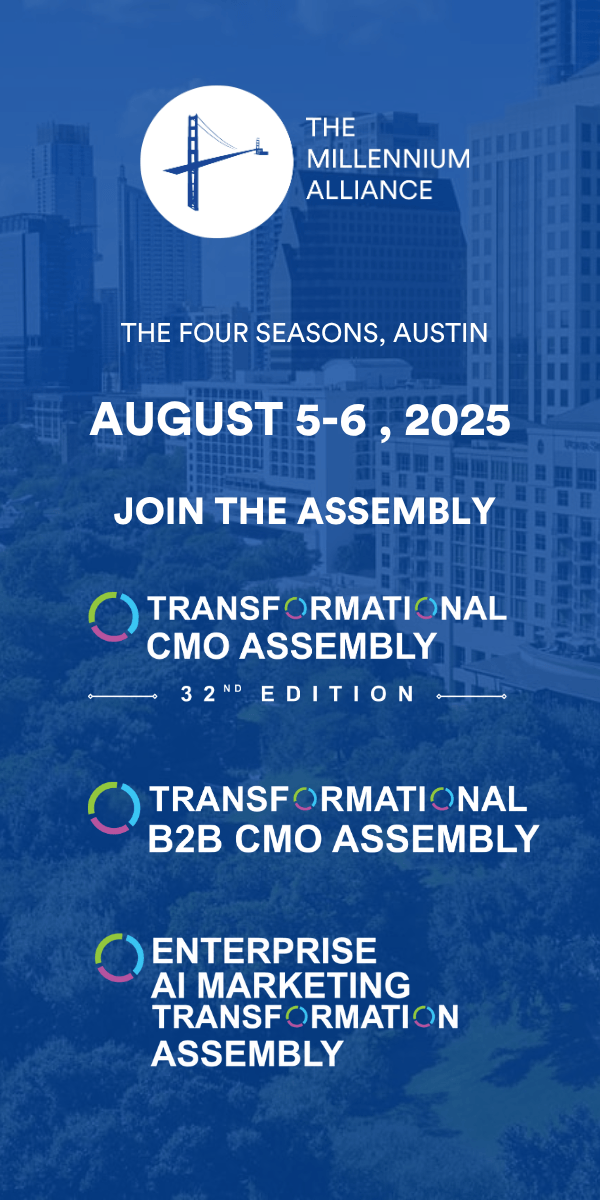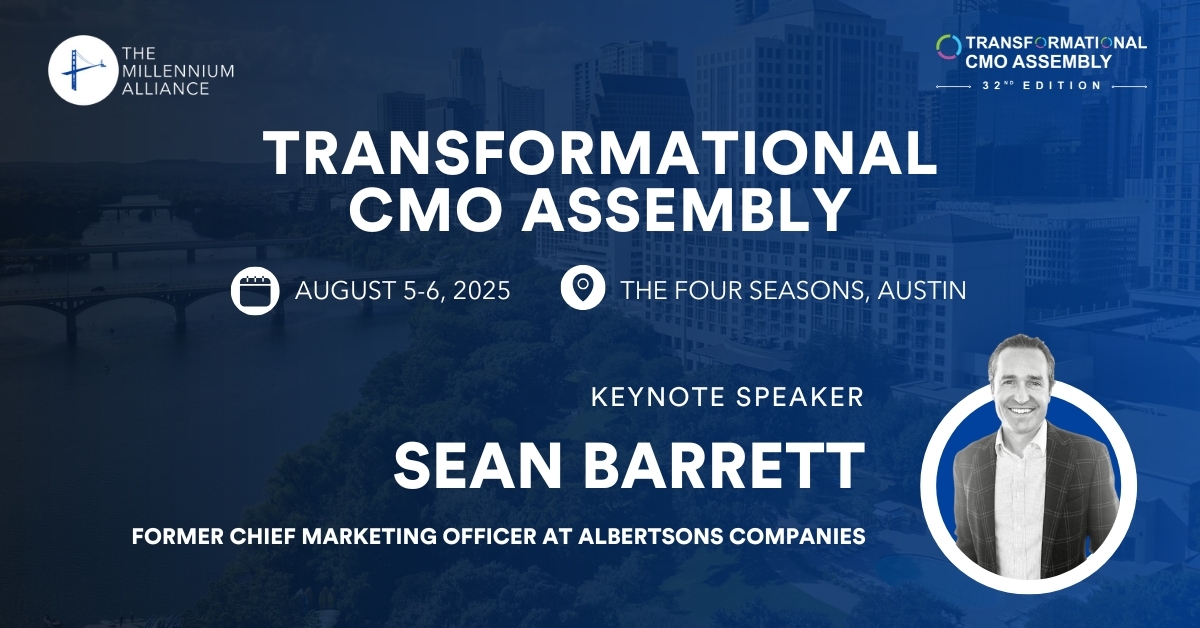This post was originally published on LinkedIn by Denise Yohn, Brand expert, Author and Millennium Alliance Advisory Board member.
According to the Small Business Administration, about one-fifth of business startups fail in their first year and about half succumb to failure within five years. Only about one third survive ten years or more. Many factors explain the dearth of successful scale-ups: lack of market need, insurmountable challenges in business model and/or economics, inability to secure funding. The list goes on, but one of the most common reason that companies fail to scale is organizational culture.
Even at businesses that manage to hang on, most experience culture challenges as they grow. As companies expand from a tight-knit core group of founders and first employees to 100+ people, the intuitive, implicit culture that fueled early growth often becomes diluted, distorted, and/or dysfunctional. New employees don’t learn cultural norms or challenge them and older ones wax nostalgic and wish things could get back to the way they were. Meanwhile, company leaders take their organizational culture for granted or get too consumed with all the other demands of scaling. And then, in what seems like an instant, company leaders wake up one day to find their small start-up is now comprised of hundreds of employees who are disengaged and unproductive.
It doesn’t have to be this way. Leaders can scale culture successfully – if they make it a priority for themselves and the entire organization. Having worked with a range of organizations and their leaders through their scaling experiences and researched many more for my latest book, FUSION: How Integrating Brand and Culture Powers the World’s Greatest Companies, I’ve discovered that three elements distinguish the culture of successful scale-ups: clarity, design, and practices.
Culture Clarity. When first starting up, an organization’s culture might be understood implicitly – but with growth comes the potential for confusion and misalignment. Leaders should offset these possibilities by ensuring the desired culture is defined explicitly and communicated consistently.
Leaders should clearly articulate the organization’s overarching purpose – why it does what it does, why it exists – so there is a single motivation to drive and unite everyone. When all employees, as well as key stakeholders such as investors, strategic partners, etc., have a common goal, their efforts are more likely to remain focused and aligned.
The organization’s core values — the essential and enduring principles and priorities that prescribe the desired mindset and behavior of everyone who works at the company — should also be articulated clearly. Moreover, core values should be defined explicitly. Explain the desired behaviors or behavioral norms associated with your values so people know what your values look like in action. For example, at Argentinian bank Banco Supervielle, the leaders explained the core value of “simple” in behaviors such as “make decisions as close as possible to the customer.” They also defined those behaviors they would not accept. For “agile,” they spelled out that “ignoring mistakes and not learning from them” is unacceptable.
Culture clarity is also achieved through consistent communication. Leaders must regularly and relentlessly communicate the company’s overarching purpose and core values and why they’re important. It’s not enough to talk about these foundational elements when they’re first being set or on an annual basis. They must be regularly woven into presentations, memos, and conversations. Studies have shown repetition and consistency are critical to comprehension and traction – and convey priority. Talking about culture repeatedly makes its importance clear.
Culture Design. Of course, it’s not enough only to talk about the desired culture – leaders must also role model it and create an environment that supports and nurtures it. Culture doesn’t simply happen, nor does it only grow organically. Leaders can and should set the conditions to cultivate an organizational culture that influences the way they want their employees to think and act.
The design of an organization shapes its culture. Consider how setting a standard number of minimum or maximum of direct reports into managers sets up employees to work more autonomously or more efficiently. Or how creating a new role that combines two previously disjointed functions encourages collaboration while eliminating a role might reduce bureaucracy.
Process design has a similar impact on culture. Mandating extensive budget and project approval processes, for example, will prevent a company from cultivating a less risk-averse, more progressive culture. But to encourage a culture of experimentation, leaders could develop a process for rapid prototyping.
Employee experience is another dimension through which culture should be designed. Just as companies now identify customer journeys and try to design a consistent, unique, and valuable experience for customers across all touchpoints and transactions, organizations must do the same for employees. Leaders should deliberately design experiences for employees – starting with recruiting and onboarding through to the end of employment — that interpret and reinforce the desired culture.
Airbnb was able to scale so quickly and successfully in part because its leaders imbued their mission — to create a world where anyone can belong anywhere — into every step of its employee experience including extending hospitality to potential recruits (making them feel like they could belong at the company), designing meeting rooms to match host properties around the world (encouraging employees to feel they belong to a global community), and using “landing stations” where employees store their stuff so they can work wherever in the building they want (helping them feel comfortable and they belong anywhere in the office.)
When starting up, leaders usually don’t have to put a lot of thought into culture design – people just figure out how to work together and do what needs to be done. As companies grow, some leaders will design their organizations and develop their processes with headcounts, budgets, and productivity targets in mind. But they should also consider how every aspect of the company impacts culture and use their desired culture as the filter through which they make strategic, organizational, and employee experience decisions.
Culture Practices. As the adage about good intentions suggests, merely intending to make culture a priority doesn’t ensure it will happen. Leaders must engage specific practices to build culture into the way their business is run. Effective culture practices include:
– Values-centered recruiting – In addition to skills, experience, and job fit, potential employees should be screened for values fit – meaning, their personal values should align with the company’s core values.
Companies should develop a standard list of questions to assess values fit, such as “Tell me about a time that you demonstrated [value] at work;” and “In your own words, what does [value] mean and why is it important;” and create exercises that allow potential employees to demonstrate their personal values, e.g., role-playing a difficult situation, decision scenarios, etc. Interviewers should consistently administer the questions and exercises and apply consistent criteria for evaluating the outcomes.
An additional approach to ensure values fit is to develop two lists, “must haves” and “can’t haves,” identifying the attitudes and behaviors that indicate alignment – or lack thereof — with the company’s core values and using them to evaluate every candidate.
– Founder vows – Scott Tilton and RJ Kraus, co-founders of Hookit, a sponsorship analytics and valuation platform, created a list of “vows” right before closing an investment round.
The list documented the promises they believed were important to keep so the two of them would stay aligned and keep the company, its culture, and themselves on track as they secured additional funding to fuel expansion. It included what they would do (“admit mistakes and unknowns immediately”) and what they would not do (“hinder company growth for any reason [personally or professionally]”). Each founder made promises to the other that reflected their individual challenges — one founder vowed to “stay out of the weeds, not try to do everything himself;” the other vowed to “slow down, be more thoughtful, collaborative and patient.” The list ended with a commitment to an action plan if any of the vows are broken.
This provides an excellent example of a disciplined and deliberate practice at the leadership level that is required to achieve culture.
– Culture audit and assessment – Robust measurement is critical for understanding business performance on key dimensions and culture is no exception. As such, on an annual basis, or more frequently during high-growth periods, companies should undertake an audit and assessment to understand the existing state of the organizational culture.
The audit should be conducted like an anthropological study, walking around the offices and taking note of what is seen and heard and observing how people interact with each other and their environment. The audit should review materials from all areas of the business – onboarding documents for new employees, signs posted around the office, announcements made, emails or digital communications between employees, etc. Rituals, artifacts, policies, and procedures should be noted.
A culture audit is best conducted by a cross-functional team working together with outsiders who can offer fresh, objective perspectives. Auditors should discuss their findings with employees to get their take on the culture.
Using insights and conclusions from the audit, company leaders should assess if the health and nature of the culture is as desired, and if not, identify changes that should be made to close the gaps.
Many forces that challenge scaling, such as competitive developments and market conditions, are out of a company’s control. Culture, however, is almost completely under the purview of company leaders. By implementing culture clarity, design, and practices, leaders can scale culture — and successfully go from start-up to scale-up…and beyond.














